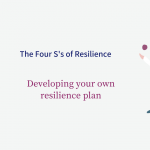In a fast-paced world where stress and sedentary lifestyles have become the norm, finding a balance between physical fitness and mental well-being has become increasingly crucial. Two popular practices that offer a holistic approach to health are yoga and Pilates. These disciplines have gained widespread recognition for their ability to enhance strength, flexibility, and mindfulness. In this article, we’ll explore the fundamentals of both yoga and Pilates, their benefits, and how they can complement each other for a well-rounded wellness routine.
Understanding Yoga:
Yoga is an ancient practice that originated in India and encompasses a wide range of physical, mental, and spiritual exercises. It combines postures (asanas), breath control (pranayama), and meditation to promote physical and mental harmony. Yoga not only improves flexibility and strength but also enhances mindfulness and promotes inner peace.
Key Elements of Yoga:
- Asanas: Yoga poses are designed to stretch and strengthen the body, enhancing flexibility and balance.
- Pranayama: Controlled breathing techniques in yoga help calm the mind and increase awareness.
- Meditation: Mindfulness and meditation practices in yoga promote mental clarity and reduce stress.

Benefits of Yoga:
- Flexibility: Regular practice of yoga asanas increases muscle and joint flexibility.
- Strength: Many yoga poses require the use of body weight to build functional strength.
- Stress Reduction: Yoga’s focus on mindfulness and breathing helps alleviate stress and anxiety.
- Improved Posture: Yoga cultivates body awareness, leading to better posture and alignment.
- Mind-Body Connection: The integration of physical movement and mental awareness fosters a stronger mind-body connection.
Understanding Pilates:
Pilates, developed by Joseph Pilates in the early 20th century, is a low-impact exercise system designed to improve strength, flexibility, and posture. It emphasizes controlled movements and focuses on developing core strength, stability, and alignment.
Key Elements of Pilates:
- Core Engagement: Pilates exercises target the core muscles, including the abdominals, back, and pelvis.
- Controlled Movements: Movements in Pilates are precise and controlled to ensure proper alignment and muscle activation.
- Equipment: Pilates can be performed on a mat or with specialized equipment like the reformer for added resistance.
Benefits of Pilates:
- Core Strength: Pilates helps build a strong and stable core, enhancing overall body strength.
- Improved Posture: The focus on alignment and core engagement leads to better posture.
- Flexibility: Pilates exercises incorporate stretching movements that improve flexibility.
- Injury Prevention: Pilates emphasizes proper form and alignment, reducing the risk of injuries.
- Mind-Body Coordination: Controlled movements in Pilates enhance mind-body coordination and awareness.
Combining Yoga and Pilates:
While yoga and Pilates have distinct origins and approaches, they share common elements that make them complementary practices. Both disciplines emphasize mindfulness, breath control, and the mind-body connection. Incorporating elements of both yoga and Pilates into a fitness routine can offer a balanced approach to wellness.
Sample Combined Routine:
- Warm-Up: Begin with gentle yoga stretches to warm up the body and focus on deep breathing.
- Yoga Poses: Perform a sequence of yoga asanas to enhance flexibility and mindfulness.
- Pilates Core Work: Transition to Pilates exercises that target core strength and stability.
- Cool Down: End the session with restorative yoga poses and meditation for relaxation.
Conclusion:
Yoga and Pilates are versatile practices that promote physical and mental well-being. Whether you’re looking to improve flexibility, build strength, or reduce stress, these practices offer a holistic approach to health. By combining yoga’s emphasis on mindfulness and flexibility with Pilates’ focus on core strength and controlled movements, individuals can create a balanced fitness routine that nurtures both the body and the mind. Remember that practicing under the guidance of qualified instructors can help you reap the full benefits of these practices and achieve a harmonious integration of strength, flexibility, and mindfulness in your wellness journey.




















Add Comment